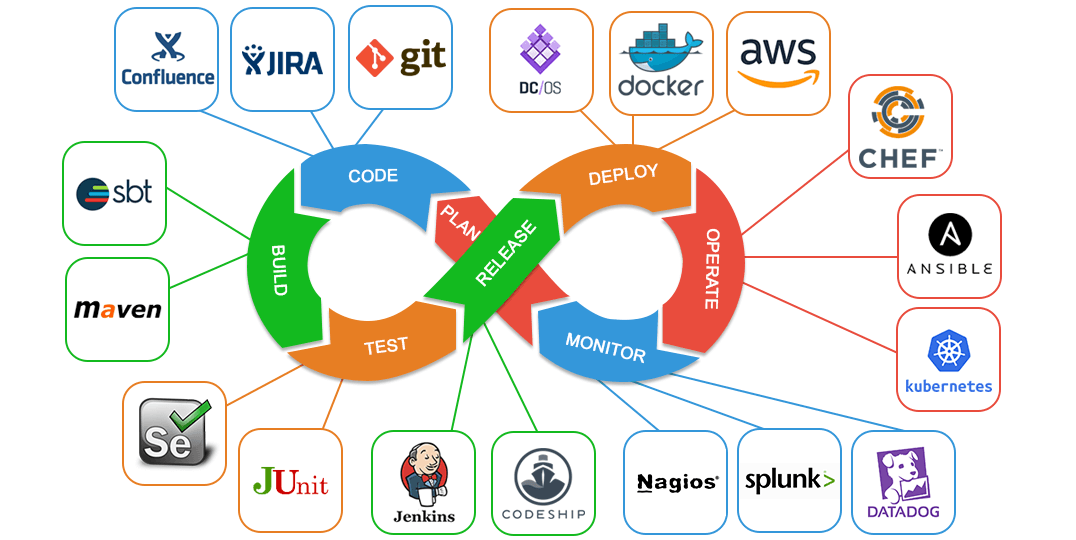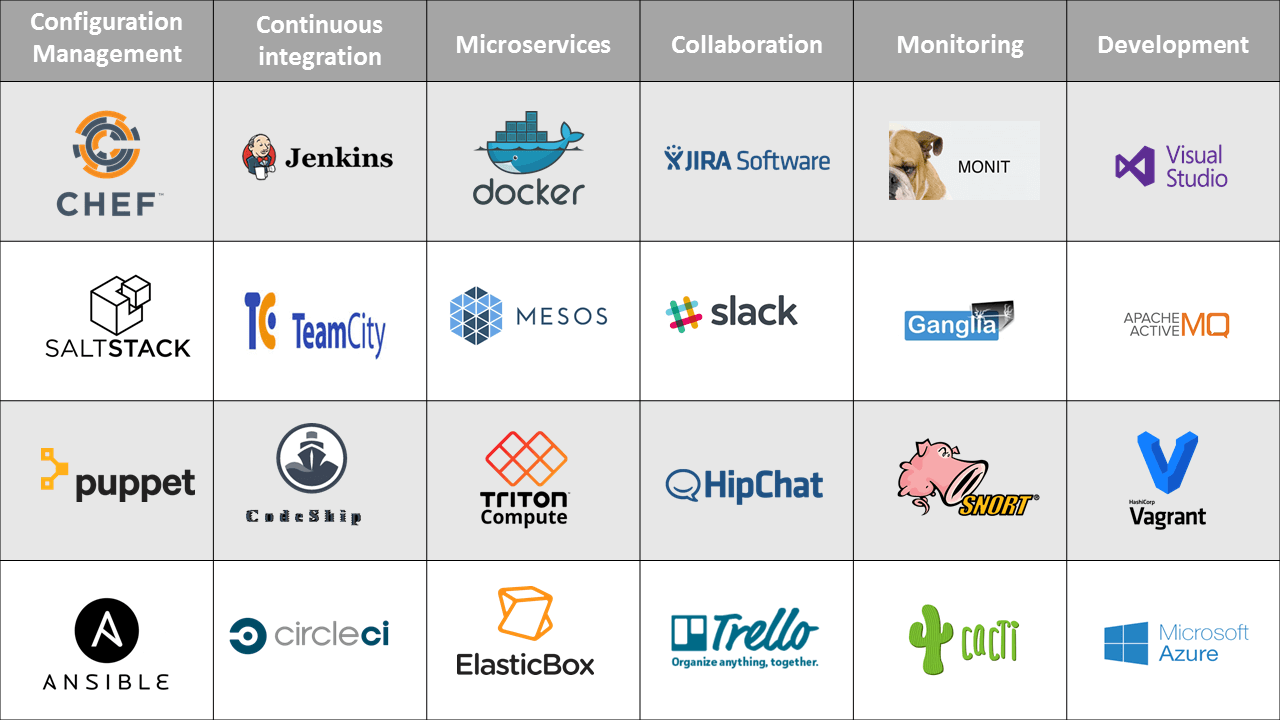
Top 5 DevOps Automation Tools in 2020
- April 28, 2020
- Shoaib
- DevOps, Technology
- No Comments
DevOps has been trending more and more over the past decade, and there’s no surprise as to why. We all know how implementing DevOps can tremendously transform an organization, but what really drives this industry 4.0 trend? The short answer is DevOps automation tools.
DevOps is simply an IT approach combining software development (Dev) and IT operations (Ops) in a manner that empowers organizations to deliver through automation, software releases, and new developments to their users in a rapidly changing environment. DevOps automation tools have since surfaced and there are quite a few of them out there. These tools have become the fundamentals of every specific DevOps requirement.
With that understanding comes the next reminder to potential DevOps users that no single DevOps automation tool is enough to yield the desired outcome of a DevOps implementation. Consequently, we look at five of the top DevOps automation tools that are likely to dominate the software industry in 2020 and beyond.
Puppet
If you’ve been working on DevOps projects and never heard of Puppet, we doubt your ability to implement DevOps strategies. Puppet Enterprise is undeniably the most advanced cross-platform configuration management tool available for use in configuration, deployment, and management of servers, which translates to faster and more secure deployments.
Puppet is used to configure each host in your infrastructure and dynamically scale machines up and down to manage servers. While in operation, it continuously checks whether the configuration is available or not. If nothing is found, then it reverts the essential configuration on the host.
To work effectively, Puppet has the master-slave architecture with communications rendered through a secure encrypted channel over SLL. In order to automate the infrastructure, it treats the entire infrastructure as a code.
Finally, Puppet Enterprises grants you the ability to manage multiple teams and resources while handling disasters wisely. It’s among the DevOps automation tools with several modules that allow quick integration with other well-known DevOps tools.
Docker
As a DevOps technology suite with a great reputation, Docker enables DevOps teams to seamlessly build and run distributed applications quickly and efficiently. At the core of its operation is virtualization at the process level. Through the use of isolated environments for container apps, Docker eliminates conflicts between apps, therefore making these applications portable and more secure at the same time.
With Docker, you can be sure to enjoy flexible image management because it maintains a private registry from where images are stored, managed and image caches configured. It also brings with it the capacity to create your images or modify existing images according to requirements.

Another contender for the top spot in the DevOps automation tools list is Jenkins, a popular CI/CD automation tool that has been widely used in monitoring the implementation of repeated tasks. Because it’s an open-source tool written in Java, Jenkins is ready to run on any operating system and packs with it tons of built-in plugins used for continuous integration. That last bit of continuous integration is the single most beneficial feature of DevOps.
With Jenkins CI/CD server, you have the power to automate the various stages of your delivery pipeline and ultimately boost your deployments.
Through a pipeline system, Jenkins enables CI/CD for any combination of source code repositories and coding language. Because of its Pipeline-as-code functionality, it renders the CI/CD pipelines as complete code and integrates the whole DevOps chain. Using Jenkins means you can utilize almost a thousand plug-ins to integrate all your DevOps stages competently.
Bamboo is a close ally of Jenkins in functionality. It’s also a CI/CD DevOps automation tool that permits automation of the delivery pipeline, from build to deployment.
Unlike Jenkins, it boasts of many pre-built functionalities that would otherwise require manual configuration in Jenkins. For this reason, only about 100 plugins exist for Bamboo compared to the nearly 1,000 plugins for Jenkins. Because of the pre-built features, it’s able to perform out of the box features without requiring additional plugins. Bamboo is truly a time saver in the configuration. Using Bamboo brings out the difference between free alternatives and paid software.
Its integration with other platform popular products like Bitbucket and Jira is effortless and offers access to built-in Git and test environments. Finally, you’ll hear people commend the intuitive UI Bamboo, which, unsurprisingly, has auto-completion, tooltips, and other convenient features.
Another contender for the most popular DevOps automation tools is Terraform, a cloud infrastructure provisioning tool. In Terraform, the infrastructure, unlike the rest of them, is described using code.
It simply generates a graphical representation of all resources, creating and modifying any independent resources in parallel, and maintaining different versions. As it’s also commonly known, Terraform uses state files to uphold the state of infrastructure.
To perform its duty, Terraform first generates an execution plan by enlisting all the steps to be followed to reach the desired state and then follows the execution plan to build the outlined infrastructure. By operating this way, Terraform facilitates the safe and efficient build and change infrastructure with very minimal human interactions for the DevOps team.
It’s also important to note that Terraform doesn’t limit public or private cloud infrastructure. It efficiently supports both.
More DevOps automation tools that DevOps teams must learn about include Ansible, Chef, Vagrant, Git, Kubernetes (founded by Google), Nagios, QuerySurge, Buddy, Gradle, Raygun, etc.
Wrap up
DevOps automation tools have tremendously changed the field of DevOps. Not only do they make the process of deployment much faster, but they also improve the stability of the development environment, promote agility, and promote business. Go to plumlogix.com for DevOps solutions.

